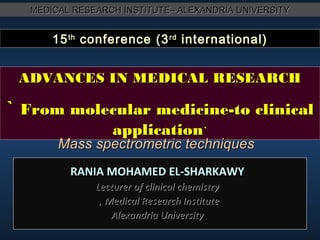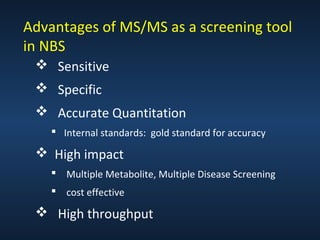The document discusses the advancements in mass spectrometry and its applications in medical research, particularly in identifying and quantifying molecules. It details the processes of sample ionization, analysis, and detection, as well as various mass spectrometry techniques and their uses, including newborn screening and proteomics. Additionally, it highlights the advantages of mass spectrometry as a sensitive and cost-effective analytical tool.















































